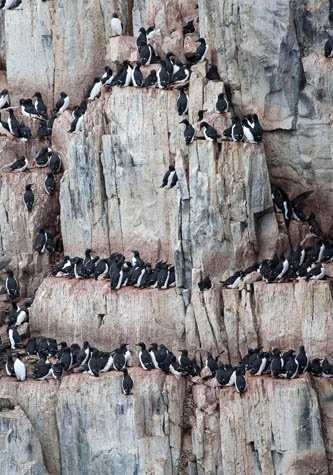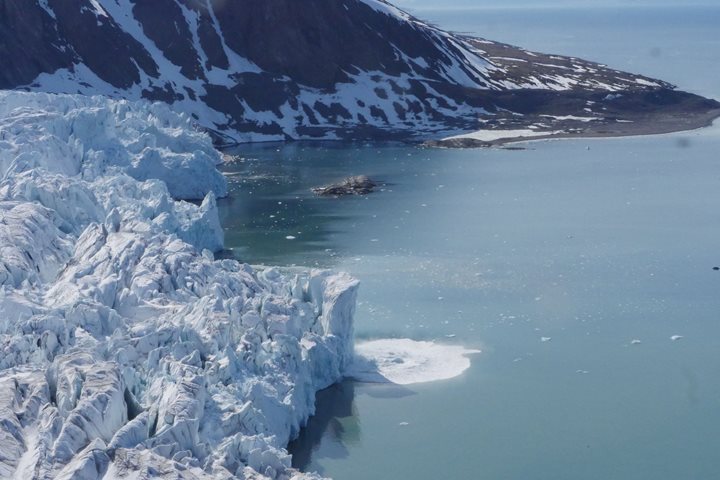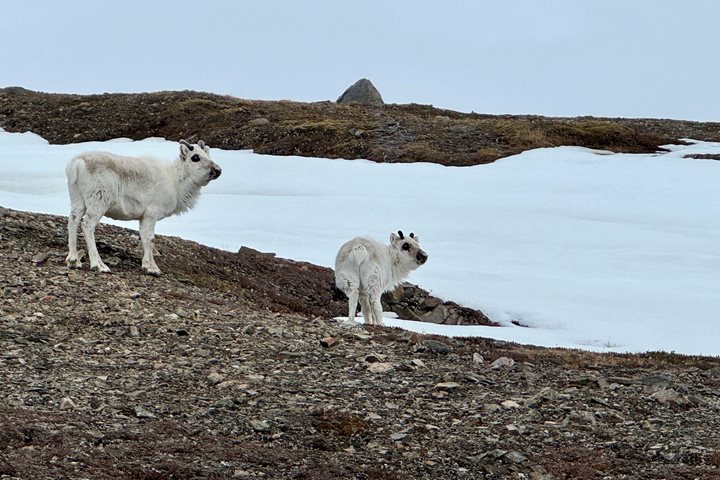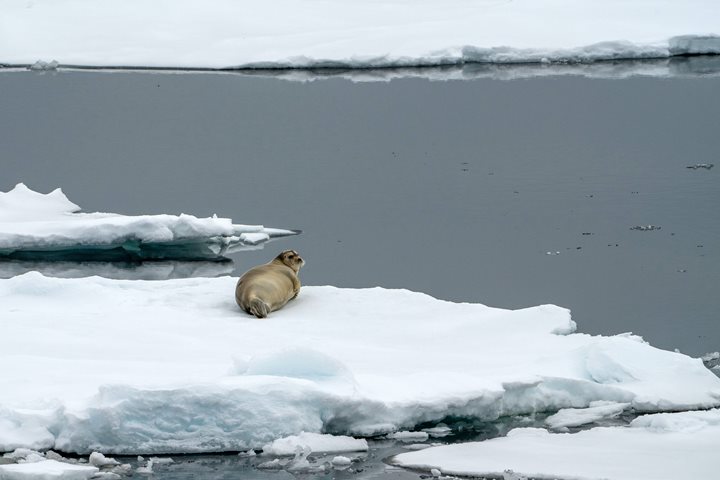We awoke this morning at the bird cliffs of Alkefjellet at Kapp Fanshawe, on the west side of the Hinlopen Strait near Lomfjorden. The weather was a bit colder than we had experienced so far, so we donned our warm gear and headed outside before breakfast. As the ship travelled along the cliffs, we were able to observe hundreds of thousands of birds as they nested and rested, flew all around us, dove for food, took off from the water with wings flapping furiously, and landed in the water with legs splayed wide. Our main feathered friend at the cliffs was the Brunnich’s Guillemot, a black and white auk. These birds lay their eggs directly on the cliff ledges and can dive up to 300 feet into the ocean to find food. The sights and sounds of this extremely large nesting colony were an amazing way to start our day.
Next we headed to the Arctic Desert within the Palanderbukta fjord. When one envisions the desert you think hot, dry, and arid, but in contrast the Arctic desert is frigid and rocky, yet teeming with life trying to eke out an existence. The hills and beach were steeply sloped and covered in rocks of various sizes. We discovered small plant life including lichens of various colors and tiny plants like the purple saxifrage. Fossil evidence in the limestone rocks we were walking upon included brachiopods and crinoids. Paleozoic shells were common, while the find of the day, discovered by our youngest explorer, Gwendolyn, was an ammonite. The long hike group even took advantage of belly sliding on a snowy slope, instigated by the children but enjoyed by all ages.
Later, in the Wahlenberg fjord, we passed the west side of the Austfonna ice cap. We had an initial sighting of two polar bears walking on the fast ice.
In the afternoon we continued north along the edge of the ice in hopes of finding more wildlife. By the end of dinner we had reached 80° N latitude, just 10 degrees of latitude and 600 nautical miles from the North Pole! Soon the ice blocked our further progress north, but not before we made it to the northerly most point that the ship has been for the season.






